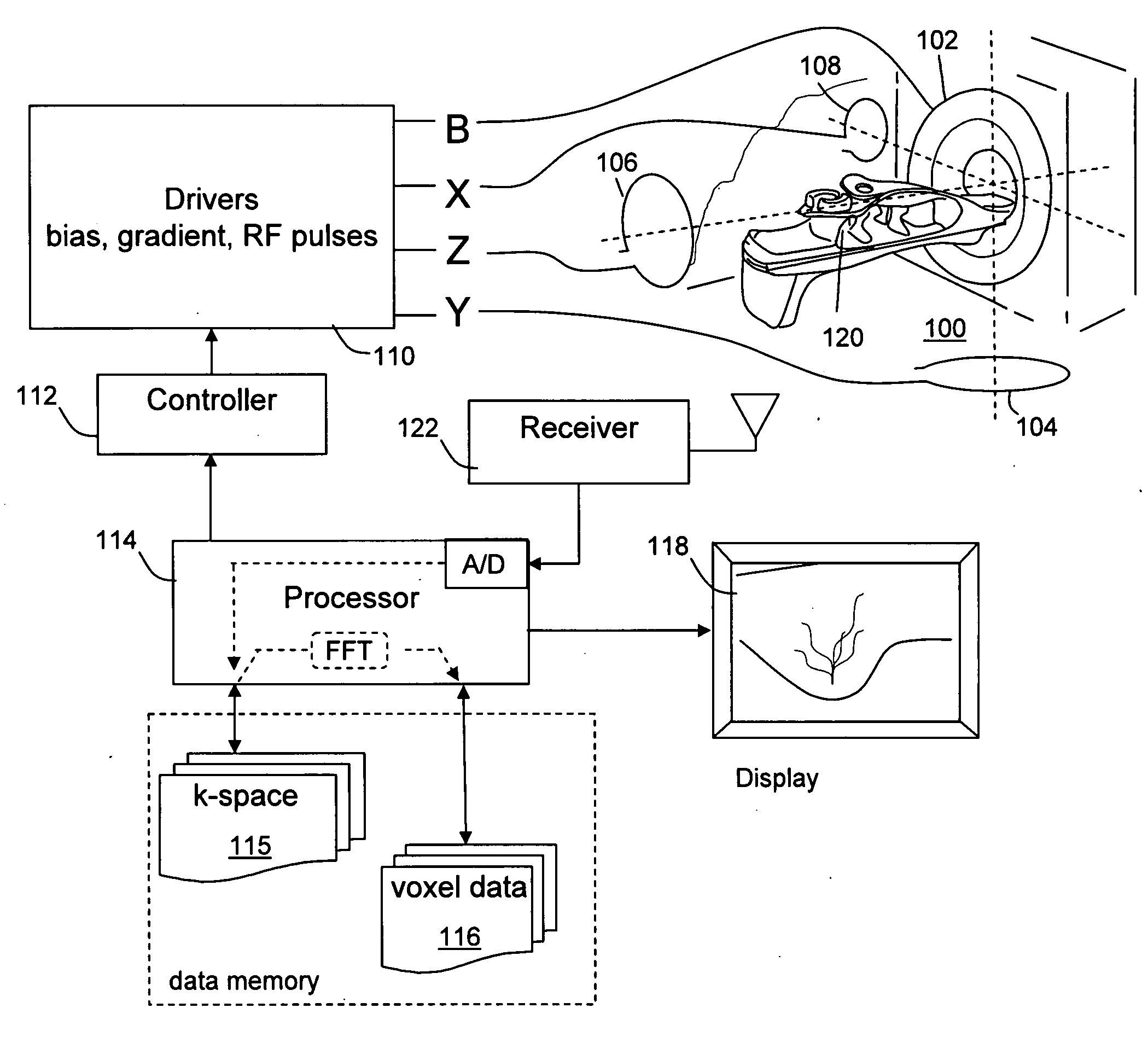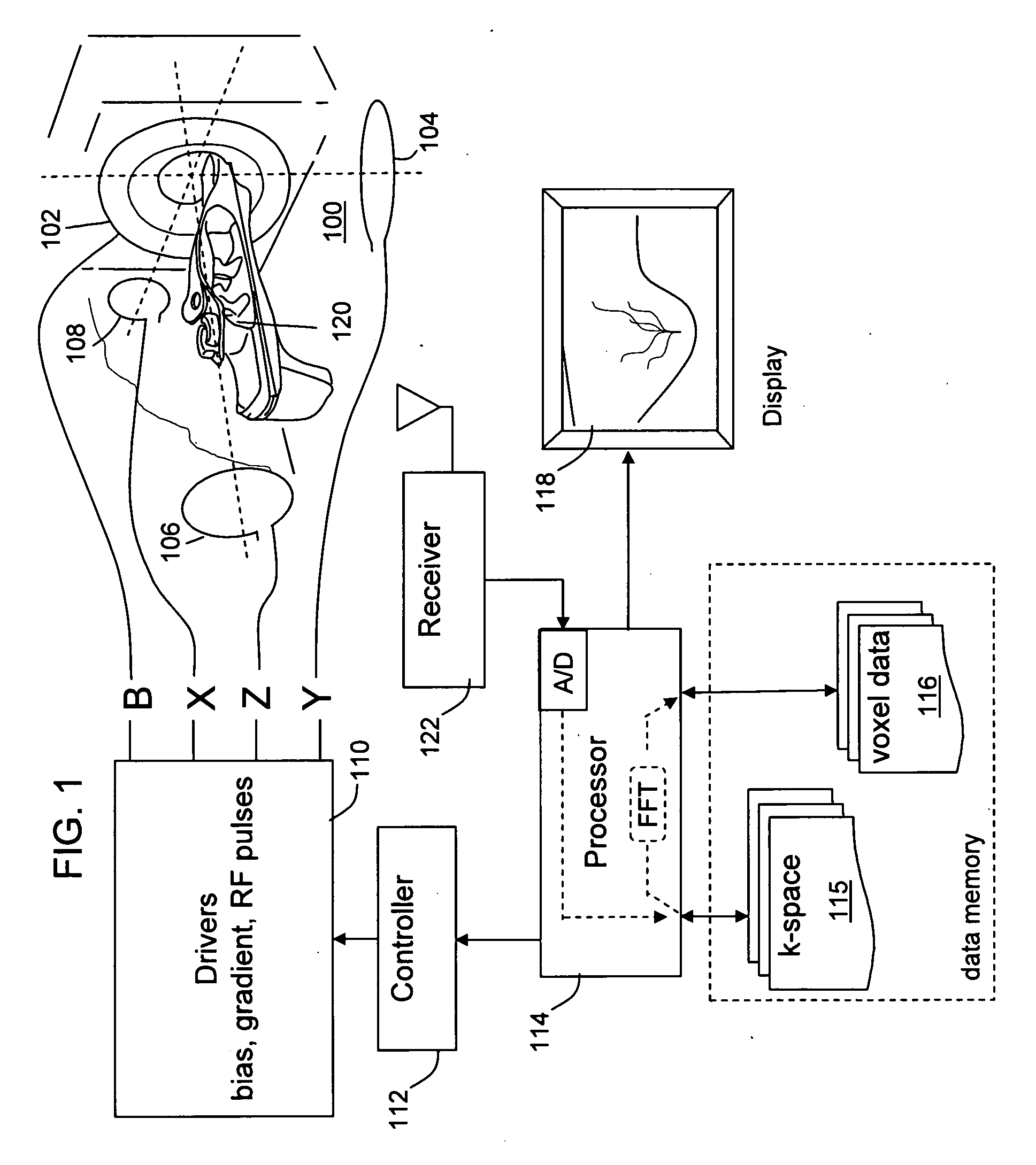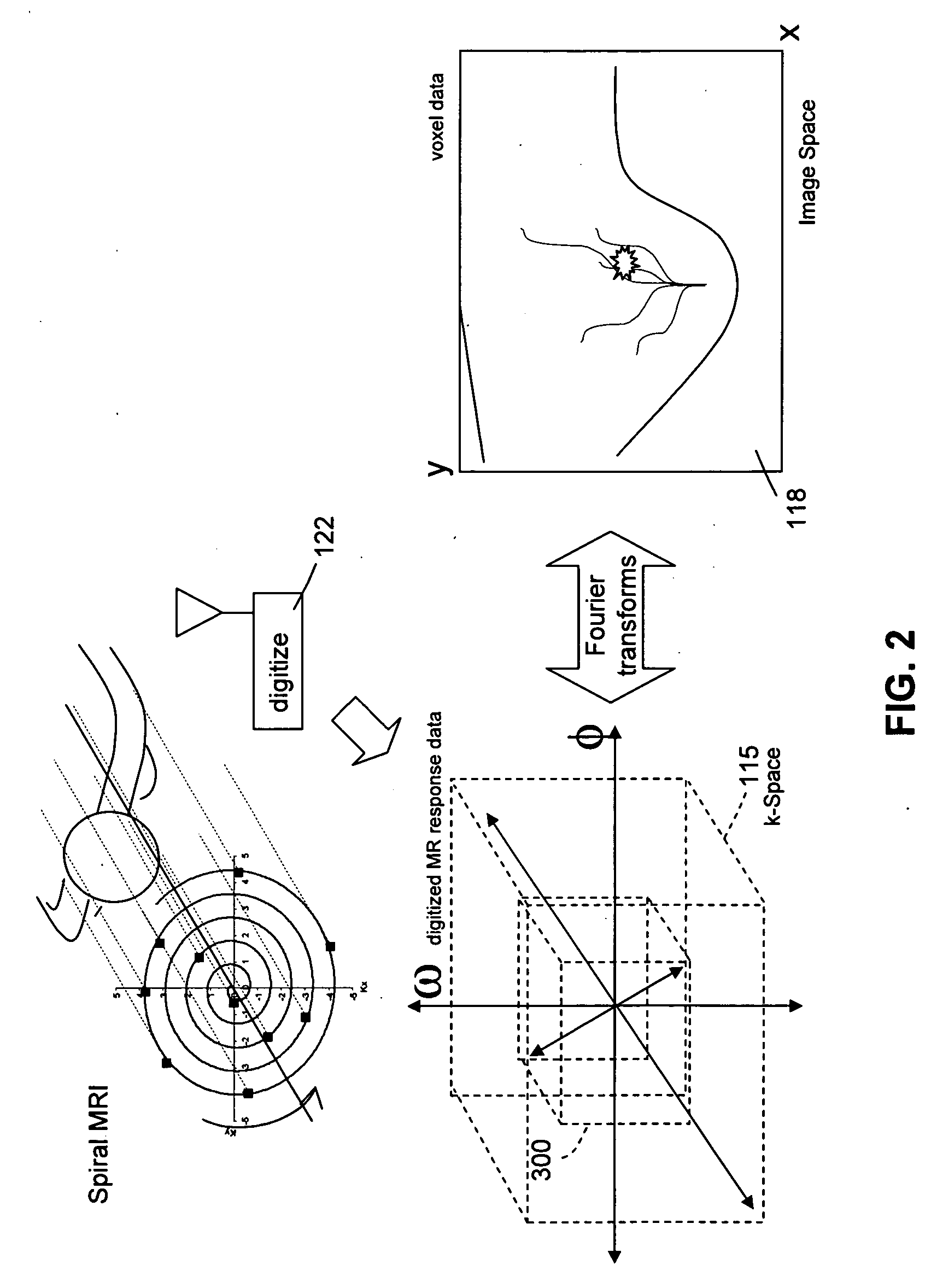Extending the resolution of MRI data by combining subsets from plural image acquisitions
a technology of mri data and subsets, applied in the field of nuclear magnetic resonance imaging, can solve the problem that the complete volumetric image would present a minimum time limit between stop frames, and achieve the effect of improving the extent, favorable short sampling time, and high light and contras
- Summary
- Abstract
- Description
- Claims
- Application Information
AI Technical Summary
Benefits of technology
Problems solved by technology
Method used
Image
Examples
Embodiment Construction
[0038]FIG. 1 shows generally the elements of a nuclear magnetic resonance (NMR or MRI) imaging system. In one embodiment, the imaging system can be a breast imaging system operated with rotating off-resonance excitation at frequencies chosen to distinguish water-based tissues while limiting the response of fat-based tissues. The system is configured to collect nuclear magnetic resonance information in a sequence of excitation and sensing operations that occurs while gradient magnetic fields are adjusted. A sequence is executed comprising excitation and phase encoding RF pulses. Each excitation is followed after a delay by a sensing interval during which the responsive signal from the imaged tissue is received, digitized and the results are stored in a data memory wherein digitized values are organized to populate a matrix conventionally known as k-space. As the sequence is executed, more and more of the image data is collected until data characterizing the response of the full tissu...
PUM
 Login to View More
Login to View More Abstract
Description
Claims
Application Information
 Login to View More
Login to View More - R&D
- Intellectual Property
- Life Sciences
- Materials
- Tech Scout
- Unparalleled Data Quality
- Higher Quality Content
- 60% Fewer Hallucinations
Browse by: Latest US Patents, China's latest patents, Technical Efficacy Thesaurus, Application Domain, Technology Topic, Popular Technical Reports.
© 2025 PatSnap. All rights reserved.Legal|Privacy policy|Modern Slavery Act Transparency Statement|Sitemap|About US| Contact US: help@patsnap.com



